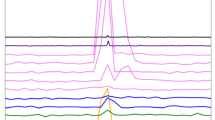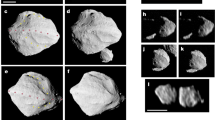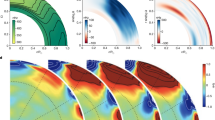Abstract
THE light curve of novae is characterised by a sharp rise in brightness, followed by a decrease in light intensity at an ever slowing rate (see Fig. 1). The optical spectrum of novae near maximum consists of emission and absorption line systems superimposed on a continuum. One of the main features of the evolution of novae spectra is the fading of the continuum relative to the emission lines. In late stages, all novae develop the ‘nebular’ spectrum, consisting almost exclusively of emission lines with no continuum or with a very weak one (see ref. 1).The analysis of the light curve of a nova can reveal the time of ejection of its main shell. In four galactic novae this time was found to vary between 19 and 40 d before maximum.
This is a preview of subscription content, access via your institution
Access options
Subscribe to this journal
Receive 51 print issues and online access
$199.00 per year
only $3.90 per issue
Buy this article
- Purchase on Springer Link
- Instant access to full article PDF
Prices may be subject to local taxes which are calculated during checkout
Similar content being viewed by others
References
McLaughlin, D. B., Stellar Atmospheres (edit. by Greenstein, J. S.), 585 (The University of Chicago Press, 1960).
Osterbrock, D. E., Astrophysics of Gaseous Nebulae, 35 (W. H. Freeman and Company, San Francisco, 1974).
Hutchings, J. B., Mon.Not.R.astr.Soc., 158, 177 (1972).
Author information
Authors and Affiliations
Rights and permissions
About this article
Cite this article
LEIBOWITZ, E. Determination of the time of the shell ejection in nova outbursts. Nature 264, 41–42 (1976). https://doi.org/10.1038/264041a0
Received:
Accepted:
Issue Date:
DOI: https://doi.org/10.1038/264041a0
This article is cited by
-
Nova shells: matter-bound or radiation-bound?
Nature (1977)
Comments
By submitting a comment you agree to abide by our Terms and Community Guidelines. If you find something abusive or that does not comply with our terms or guidelines please flag it as inappropriate.



